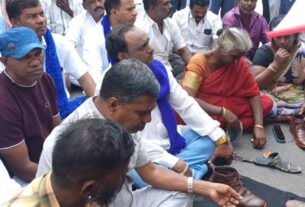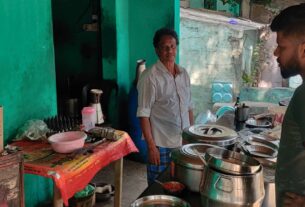As thousands of people battle the second wave of Covid-19 across India, social media comes to the rescue of people who are unable to find quick medical assistance.
Bengaluru: On April 12 this year, Shoba Mary’s world turned upside down when she found out her 58-year-old brother, with comorbidities, tested positive.
Shoba, a resident of Bengaluru, took her brother to the nearest private hospital only to find out that there were no beds available. With his health deteriorating, Shoba’s brother was admitted to another hospital where they were informed that her brother would need an ICU bed with a ventilator.
When Shoba couldn’t find any leads about the availability of ventilators from Bruhat Bengaluru Mahanagara Palike (BBMP) helpline, she turned to WhatsApp groups for help.
Soon many texts flooded in with a few leads. While the leads helped Shoba find another hospital to transfer her brother, she was then informed that no ventilators were available there either. Finally when no one was able to help, Shoba, through her connections, sought help from an MLA who helped her arrange a ventilator. All that effort went in vain when Shoba’s brother passed away last month.
Like Shoba, thousands of Indians are turning to Twitter, Instagram, Facebook, and WhatsApp for hospital beds, oxygen cylinders, and medicines. From regular people to celebrities, many social media users have used their reach to help those in need. In many cases, users say that these appeals have saved lives. People during the pandemic have also created websites to help the ones in need.
Many people also ended up finding help through dating applications like Tinder.
Social media Influencers like Varun Agarwal, who has over 58,000 followers on Instagram, and Sanjana Singh, who also has almost 14,000 followers, among others, have been stepping up to amplify messages and connect people to leads: from arranging for hospital beds to collecting money for people who can’t afford to pay their hospital bills.
“I have been putting up at least 15 stories every day for beds, plasma, medicines,” said Sanjana Singh, Content Curator at Terribly Tiny Tales. Since she has over 13,000 followers, many people were able to take notice of the cases she helped amplify.
“Any one of these 13,000 people might be of help to someone. Once or twice I got messages that they were able to get a bed or plasma and that felt like such a blessing,” she added.
Sanjana believes that even though a third person might find these as just some stories and posts people have been putting up, a person who’s fighting for their life would appreciate any little help that can make a difference.
Anoop Mishra, founder and Chief Executive Officer of Publicity Mantra and a social media expert, said that social media today is being used in the field of crisis management and that trending hashtags reflect public concerns.
“We have a strength of 50 crore active social media users out of 63 crore active internet users in India and the best part, they are utilising the flexibility and pervasiveness of social media platforms,” he said. “It’s not wrong to say that social media encourages people to come forward and support each other.”
While Anoop encourages people to use social media during the crisis, he also warns of the drawbacks that it comes with.
Upsides and Drawbacks
As India reports over three lakh new cases daily, the health care system in the country is down on its knees. Overwhelmed with hospitals turning away Covid-19 patients, several people continue to scramble for plasma donors. States across the country report a shortage of oxygen cylinders, and medicines like remdesivir continue to be in short supply.
Anuja Arun, another resident of Bengaluru, first tried contacting BBMP’s Covid-19 helpline numbers to find a hospital bed when her 72-year-old father tested positive. She said the numbers were not helpful at all as most of them were not responsive.
Five out of 10 helpline numbers listed on the BBMP’s website did not exist and four were unresponsive and one picked up.
With no help from authorities, Anuja turned to social media for help where she managed to find a bed with a ventilator for her father.
Anvy Shrivastava, a volunteer at the Delhi Health department said, “We have contact lists of all the Point of Contacts of different government hospitals. So instead of calling on the busy lines, we ask our point of contact to inform us about the bed status, etc.”
Anvy pointed out that getting supplies has been very difficult as supplies are mostly out of stock. “For oxygen supply, we mostly rely on social media and there are few contacts who make it available most of the time. The problem is more when we are reached out for certain medicines or injections or plasma. People have to physically rush to the suppliers if they are in dire need. Because all these resources are subjected to quick exhaustion,” she said.
Foundations like Hemkunt and Blood Donors India have been working around the clock to provide people with oxygen cylinders and blood plasma. Many have said that managing the influx of information has been getting hard for them.
Blood Donors India, a group with over a million Twitter followers, put out a tweet requesting people to put their queries in an organised fashion.
While Hemkunt said that their supply of oxygen cylinders was exhausted.
Melisha Noromha works with a Bengaluru task force that helps patients register and follow up with BBMP until they get a bed. “We get patients registered on 108, give their details, and wait for a call back which usually doesn’t happen. It takes a very long time and requires constant push and follow up,” said Melisha. “The system set up by the government sometimes works and sometimes it doesn’t.”
She added, “Social media has a lot higher reach. While it can be helpful sometimes, many times it can be difficult for people as the leads forwarded are not verified, which creates a lot of confusion and adds to the panic at that moment.”
Anoop agrees with Melisha. He mentioned that social media, with its extensive penetrance and speed of information transmission, have ironically led to the rapid proliferation of fake news and biased information through platforms like WhatsApp and Twitter. “The influence of social media, especially the ‘WhatsApp University’ is so strong that the World Health Organisation (WHO) has set up an Information Network for Epidemics aimed at tackling the “Infodemic” by correcting and controlling the spread of false information,” he said.
Sanjana also believes the process of finding help on social media is not always a surefire. “The process is very scattered so people end up receiving the same dead links over and over again and overcharging is overcharging,” she said.
Anoop suggests people avoid sharing half-cooked or misleading information especially about the vague treatments, remedies, medicines, or anything that put someone’s life in a state of precariousness.




